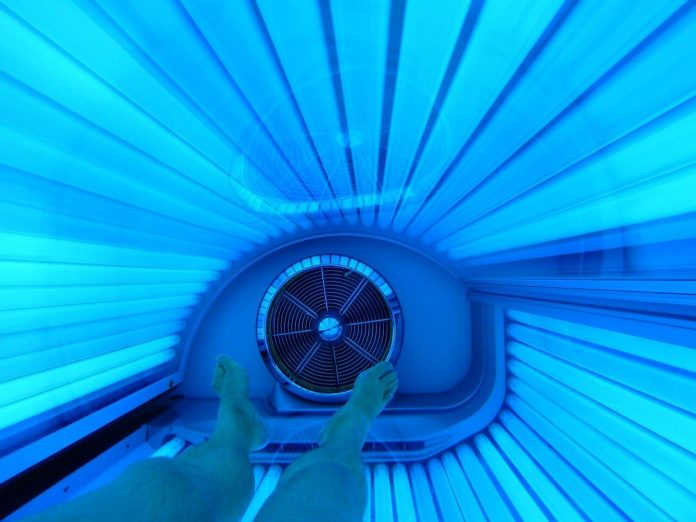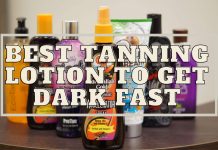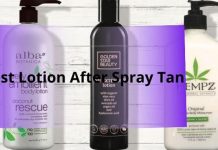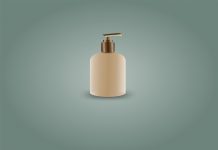When it comes to achieving the perfect tan, many factors are involved, so it’s important to know how to tan safely and how to optimize your results before you start tanning. To make the most of your tanning bed, you need to understand the following tanning bed tips and how your skin tone and goals will impact your tanning practices.
TANNING BED TIPS FOR BEGINNERS
If you want to tan, you should know what type of skin you have. Some people burn more easily than others when exposed to natural sunlight.
A tanning bed is a much more controlled environment, but it still emits UV rays, and too much exposure can cause skin burns. By knowing your skin type and how to tan accordingly, you will be able to avoid burns that can impede your path to the perfect tan.
There are six types of skin, and you need to figure out which one is yours.
- Type I: Those with type I skin tend to be very fair and have difficulty tanning without burning.
- Type II: People with type two skin can develop a tan, but only slowly and usually after a sunburn.
- Type III: In this type three skin tends to burn when overexposed to the sun, but they can also tan quite easily.
- Type IV: People with type four skin can easily tan and rarely burn if exposed to the sun.
- Type V: Those with type five skin tend to have naturally tanned skin tones and tan easily, refusing to burn in the sun.
- Type VI: People with type six skin rarely gets sunburned because their skin is naturally dark brown or black. When exposed to intense UV rays, their skin can darken.
You can achieve your tanning goals by knowing your skin type before you tan!
Define your goals
What results do you hope to achieve with your tanning regimen? Would you like a sun-kissed look or an exotic bronze tone? How do you like to tan? You can customize your tanning practices to reach your goals by knowing your skin type and goals.
Additionally, this information can help you determine the type of tanning bed and tanning bed bulb you need. A home tanning bed is the best option for tanning at home. Commercial tanning beds have different power outlet requirements, are more expensive, and have different warranties. Having a home tanning bed will meet your needs, so there’s no need to spend more and go through the hassle of installing a circuit breaker.
Likewise, if you are looking for a tanning bed for your salon or gym, you will want to choose a commercial tanning bed. The models are designed to handle multiple uses per day and come with special warranties. Using a tanning bed for commercial purposes may void the warranty in many cases.
Tanning bed tips for beginners: how to use them safely
Following are tanning bed safety guidelines for protecting your body from harmful ultraviolet radiation, which can cause skin cancer, premature skin aging, and other health problems.
1) Be of legal age to use a tanning bed
A tanning bed or booth should not be used by anyone under the age of 16. The skin of children and teenagers is more susceptible to sunbed tanning.
2) Make a consultation with a physician before using a sunbed
Consultation is a prerequisite to opting for a tanning bed
- It is also possible to fill out a skin type survey at a tanning salon to determine a safe tanning procedure for your skin type.
- Check for skin conditions such as rashes. Your skin condition can be aggravated by the UV rays.
- Make sure you check any medications you’re taking because some medications can make your skin more sensitive to sunburns.
The consultation will enable you to become familiar with the tanning process and take the necessary precautions to ensure safe tanning.
3) Go to a salon that is reputable and licensed
Make sure the tanning salon you choose has skilled professionals. Tanning procedures, safety, and risks associated with tanning should be known to them. We will work with you to customize your first and subsequent tanning visits to help you achieve your desired tan. A skin test will determine your vulnerability to radiation and pressure.
Make sure they have safety posters and labels. If you’re a beginner, ask the staff to explain the tanning process to you. Know all the functions of the buttons before entering the sunbed.
4) Properly prepare your skin
Tanning safely depends on proper skincare before and after tanning, such as;
- Prepare your skin for UV ray penetration by exfoliating and moisturizing it.
- To prevent chapped lips, apply lip balm with SPF 15.
- Avoid waxing and shaving last minute before tanning, or wax and shave 12 hours before tanning.
- An hour before tanning, apply an indoor tanning lotion. To achieve your desired results, it improves the tanning process and reduces the frequency of your tanning appointments. Sunburns can be prevented with indoor tanning lotions that determine how much UV rays reach your skin.
5) Maintain hygiene
Maintain high standards of hygiene for tanning beds, towels, and overall salon hygiene. After each use, ensure that all contact surfaces have been disinfected. A thorough cleaning can reduce skin infections, which can be transferred from one user to another.
6) Choose an appropriate tanning bed
The power and intensity of tanning beds vary. There are six types of skin, with type 1 being the lightest and type 6 being the darkest. A tanning salon should have six tanning beds, ranging from level 1 to level 6. Levels 1 and 2 are low-pressure sunbeds, levels 3 and 4 are medium-pressure sunbeds, and levels 5 and 6 are high-pressure sunbeds.
Low-pressure sunbeds are best suited for beginners, those who rarely tan, and those who don’t need a lot of tanning (skin types 4 and 5).
Beginners should avoid using high-pressure tanning beds. If you’re not familiar with the process, you can easily end up with tan lines or burns.
7) Protection
Besides what you wear on your body, you should protect other things as well.
If you use a tanning bed, you should always wear eye protection since the UV rays emitted by the bulbs can harm your eyesight. The majority of tanning salons offer tanning goggles, but you are also welcome to purchase your own.
Wear lip balm that is SPF-rated as well. Lips burn easily, and this can cause acute pain.
If you have manicured nails, you may want to consider wearing nail covers so that your manicure won’t fade while you are tanning.
8) Tanning Lotions
Using a moisturizer is crucial after tanning because it will likely make your skin dry. Additionally, lotions formulated specifically for use in tanning beds can help you achieve your tan more quickly as well as ensure that it lasts longer.
A lot of tanning lotions are available, and it can sometimes be difficult to decide which one to choose.
Be sure the lotion you choose is made specifically for tanning beds. Be sure that your tanning lotion has no SPF rating otherwise it will prevent UV rays from penetrating your skin.
There are different categories of tanning lotions that can help you achieve different tanning goals. The amino acids in tanning lotions encourage your skin to produce more melanin, resulting in a quicker tan. Bronzers are also present in bronzing lotions, which instantly give your skin a hint of color.
When you are more experienced with tanning beds, you can look into tanning lotions called tingle lotions. The name comes from the fact that these lotions cause your skin to tingle slightly. The lotions will speed up the tanning process.
Make sure you apply your tanning lotion evenly. It will be worth it if you take your time. Don’t rush this step or you’ll regret it!
9) Do You Have to Wear Protective Eyewear?
An excessive amount of UV exposure to your eyes can harm the eye itself, the retina, and even cause cataracts and blindness. People have gone blind after their first time in a tanning bed. This is not likely to happen, but it is possible if you opt-out of protective eyewear.
Closing your eyes or putting a towel over them is not sufficient to protect your eyes. Many tanning salons provide disposable protective eyewear that sticks to the area around your eye to provide protection.
Another option is to buy tanning goggles. Many of these have a string around the back of the head so they won’t move as you tan.
Several tanning salons will not check if you have protective eyewear before you go tanning, and no one will follow you into a tanning bed to make sure they are on. It is your responsibility to protect your eyesight. (Read More Tanning Bed Time Chart)
READ MORE:
HOW TO LAY IN A TANNING BED
When you tan, you want to achieve a beautiful, even skin tone. Thus, it is important to know how to properly lay in a tanning bed to get the best results. Simply rolling over in the middle of a tanning session isn’t enough.
It is best to begin the tanning session on your back. Keep your arms away from your sides and make sure your legs are not too close together as you stretch. You might want to raise your arms above your head rather than resting your hands on your abdomen to avoid light patches along your underarms.
As you lay down, bend your knees a bit so that the light can reach the space between your legs and your bottom. When you lay flat, the backs of your legs can be pressed too close to your bottom, blocking the light and leaving you with an uneven tan.
You may want to raise your arms above your head when it’s time to flip again. Don’t rest with your legs too close together. It is also recommended that you spend time on your sides so that your entire body is immersed in the light
What type of bed should you use and how long should you tan?
Depending on your skin type, you should tan for a certain amount of time. You will have to fill out some paperwork and determine your skin type at the tanning salon. They should be able to assist you with this decision (but you should still do your research).
You may want to start only tanning for five minutes in a Level One or Two tanning bed if you burn easily. My tanning salon only has one Level One bed, and they often recommend people use a Level Two bed. I started out going seven minutes in a Level Two bed and did fine. You can try seven minutes the next time if five minutes does not give you a burn, and gradually add two minutes at a time. If you begin to burn, wait an extra day or two before returning to the tanning bed. It is possible to tan without getting burned.
There are different types of tanning beds available in tanning salons, as well as different levels of beds. UV levels determine how quickly you will tan because they determine the number of UV rays. The levels start at Level 1 and go up to Level 4. There are different types of beds, including lying-down beds, stand-up beds, and even beds with tanning bulbs on one side to help you tan.
No particular bed is better than another, it all depends on what you like. When I have a lot of energy, I’ll use a stand-up tanning bed, and sometimes I’ll dance while I’m in there. It is much more relaxing to lie down in a bed, though, and sometimes I prefer that. Find out what tanning beds your tanning salon has, try a few, and see what works for you.
After Tanning
Skin Care tanning bed tips for beginners
The heat of a tanning bed can dehydrate you. Drink cold water after tanning. Not only is it refreshing and good for the rest of your body, but cold water will also help your skin prepare to replenish its natural moisture.
After slathering yourself in tanning lotion and laying under the UV lights, you will want to take a shower. Utilize a moisturizer right after your shower to help your skin feel and appear refreshed and soothed.
Clean Your Tanning Bed
It is the goal of tanning to get your skin looking beautiful and healthy, so you should also protect it in other ways. This is why it is so important to thoroughly clean your tanning bed after every use.
No matter how clean you are, your tanning bed will still accumulate bacteria. The warm environment is to blame for this. By heating tanning bed bulbs, you can sweat and at the same time create a very habitable environment for bacteria. Its also safe from tanning bed rash
When the bacteria are allowed to flourish and you continue to use the tanning bed, you may experience unpleasant and unhealthy effects such as itchiness, rashes, or infections. If you are not the only one using your tanning bed, cleaning it becomes even more crucial. We offer tanning beds with tanning bed cleaners. If you run out, make your cleaning solution or purchase more.




